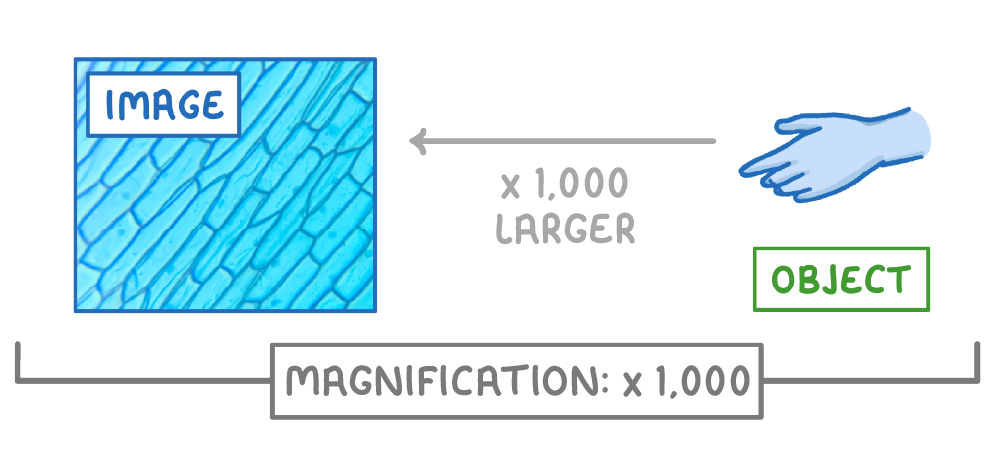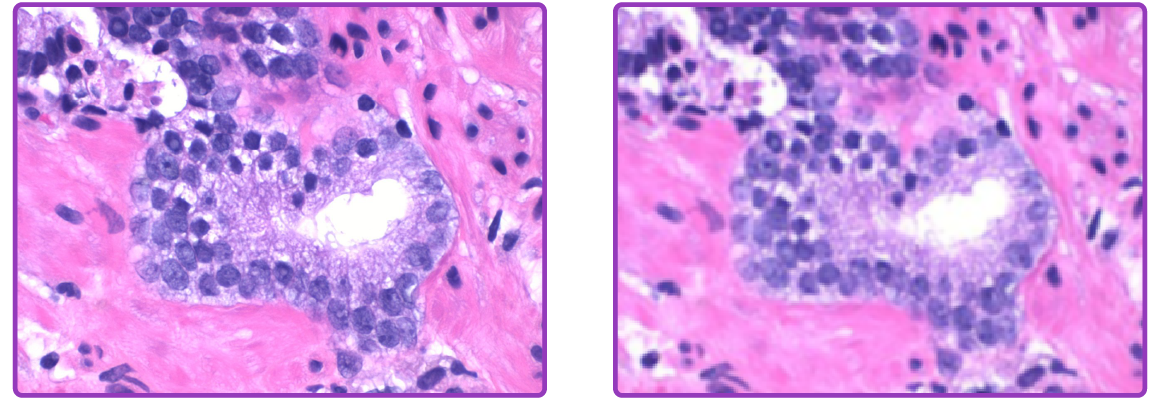Magnification Calculations & Resolution
This lesson covers:
- The definitions of magnification and resolution
- How to calculate magnification
- How to calibrate a microscope
Magnification Magnification is how many times larger an image is than the object. For example, here the image is 1,000 larger than the object, so its magnification is x 1,000.  |
Resolution Resolution is the ability to distinguish between two separate points (or how detailed the image is). For example, both images here have the same magnification, but the left image has a higher resolution.  |
Calculating magnification To calculate magnification, you need to know the image size and the object size:
The equation for calculating magnification is: |
When calculating magnification, all lengths must be in the same unit. This may require converting from one unit to another.  |